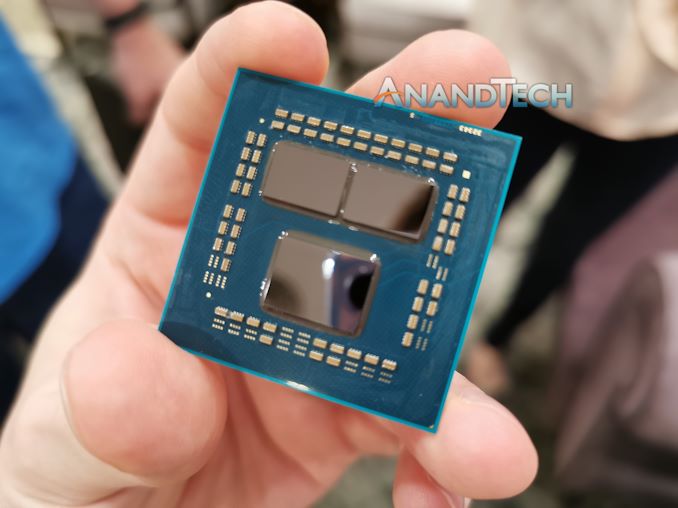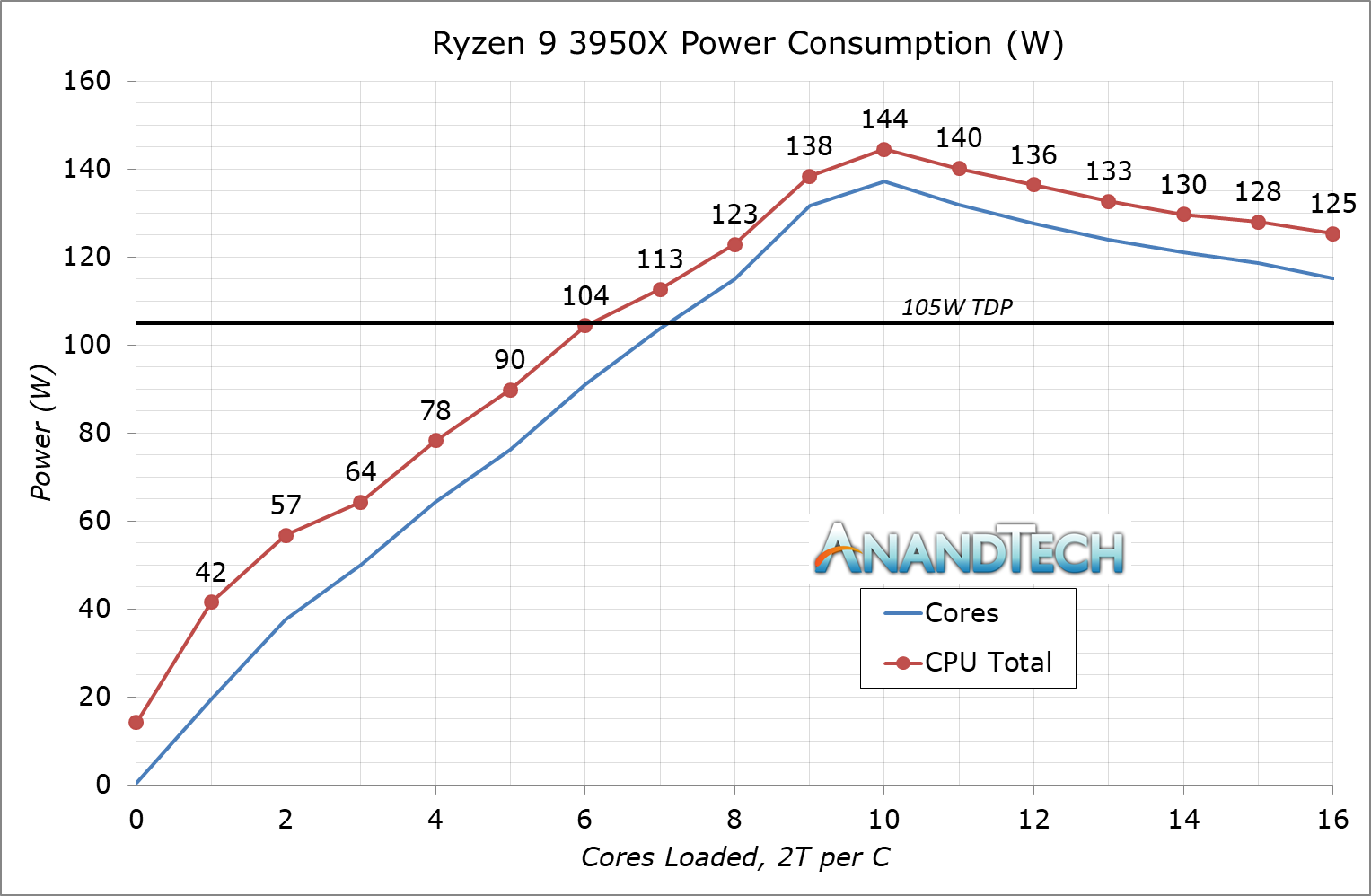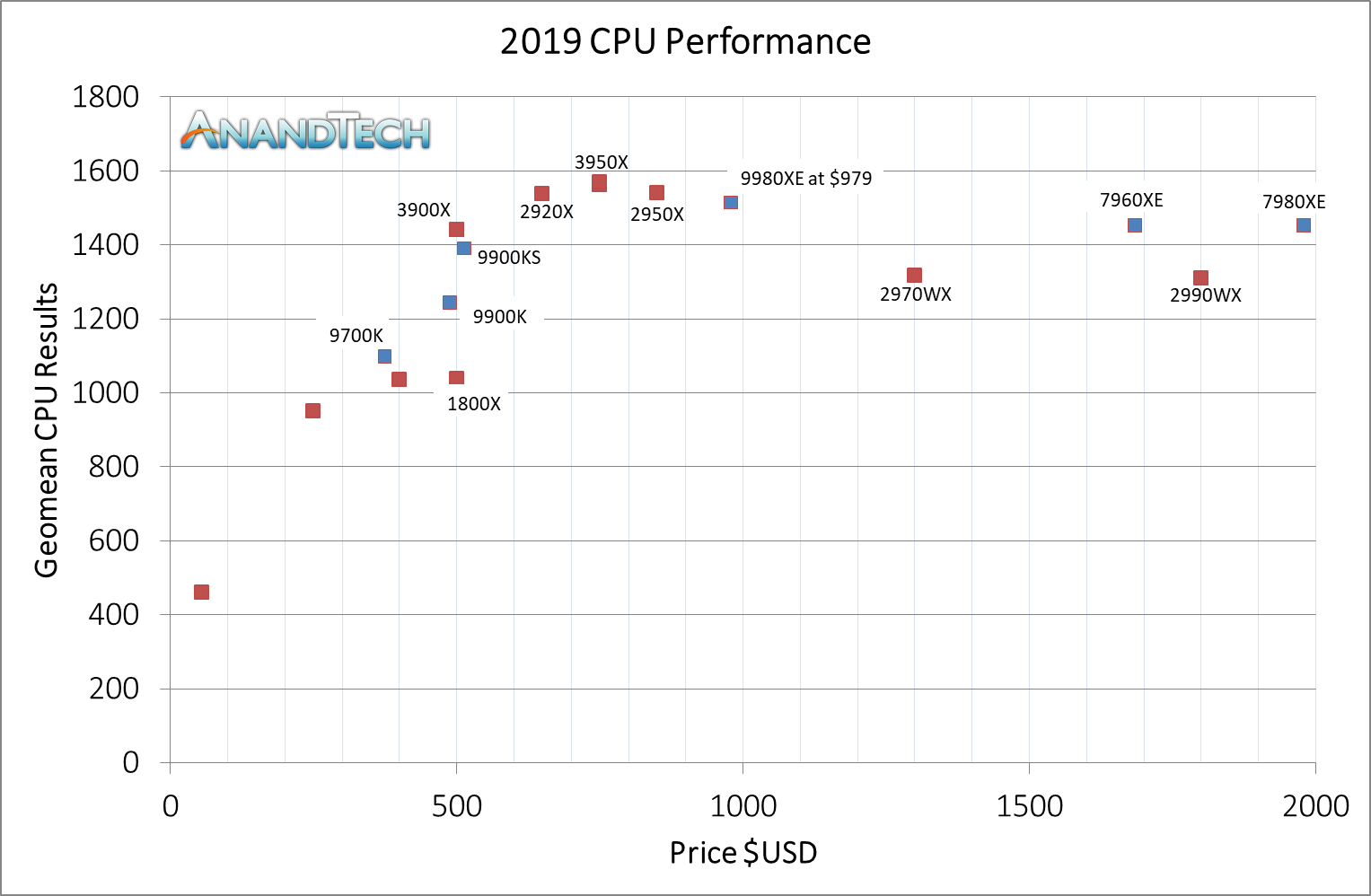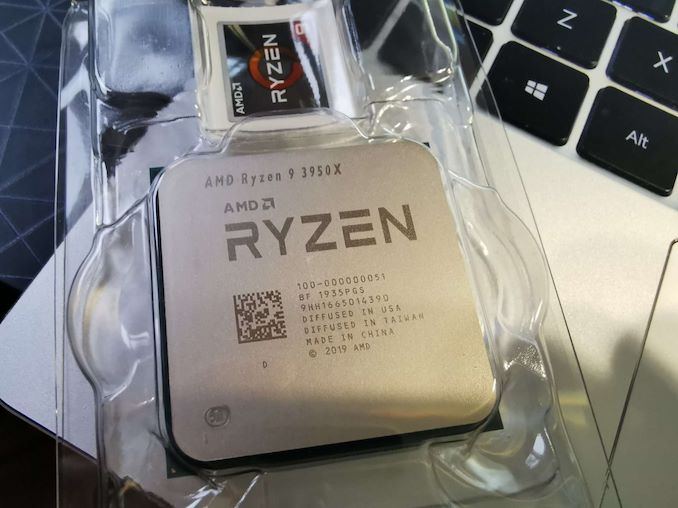The AMD Ryzen 9 3950X Review: 16 Cores on 7nm with PCIe 4.0
by Dr. Ian Cutress on November 14, 2019 9:00 AM ESTConclusion
There are many attributes by which a processor is examined. Absolute performance is the one that grabs the headlines – either by way of single core performance, or the chip performance as a whole, most often applied to an arbitrary benchmark. Aside from raw by-the-numbers performance, we also look at popular workloads, where the CPU plays a critical role. Gaming, on the other hand, is where the CPU is still important but often secondary, and so we end up analyzing the relationship between the CPU and the GPU. Beyond performance, we have cost to consider, and if a product is priced appropriately for the market it aims for.
For performance, perhaps the obvious that was expected was observed: AMD’s 3950X knocks down walls that only a couple of years ago seemed impenetrable. When compared to its immediate rivals, The Ryzen 9 3950X smashes through several of our tests published here, such as the Photoscan, Blender, Handbrake, and 7-zip, while CineBench R20 and SPEC in our benchmark database also have some strong numbers.
Because it is competing against Intel’s high-end Skylake Refresh desktop platform (comparing equal core count, rather than price), it can’t compete when AVX-512 is in play, or memory bandwidth is the limiting factor. At some level having this many cores requires extra memory bandwidth, and dual channel isn’t going to cut it. This is one of the downsides of moving ‘mainstream’ up to a HEDT price point, even if it does come with more cores.
There are some other minor points to note – if we compare single threaded performance, despite AMD’s Zen 2 having a general IPC advantage, the Core i9-9900KS is still running at 5.0 GHz for sustained single threaded work, which is still 7-15% higher than the Ryzen 3950X, and as a result it does pull out ahead in a number of ST tests as well as in low resolution (CPU-bound) gaming. At higher resolution gaming, most of the CPUs in our test perform within a fraction of each other.
We did test the Ryzen 9 3950X with both the normal Windows 'High Performance' (HP) power plan, and the 'Ryzen High Performance' (RHP) power plan that comes with the chipset drivers. Overall the RHP showed higher frequencies and 2-3% more performance than the HP, for about +4W on peak power consumption. Now we're in a quandry as to continue with the RHP - it's technically not out of the box performance, however we still have to install chipset drivers with every test, and the RHP is part of the package. We recommend users use the RHP either way, however it would be helpful if Microsoft recognized a Ryzen 3000 series processor and automatically offered / enabled the RHP in the power settings.
Another key point in our testing was power. Using our power consumption test that outputs the processor's internal power metrics, we saw a considerable inflection in overall CPU power consumption when more than 10 cores were loaded. At this level, the two chiplets are over half occupied, so the desire to balance power over cores and reduce frequency occurs. Normally we expect the power to equalize at that peak level across all the cores, however something else is happening on the chip that means a lower overall power level is found. This is perhaps current density on the Zen 2 cores and chiplets becoming a factor, although we are talking about moving from 10W per core to 12W per core, which isn't a considerable jump, but might just be enough of a voltage jump to become a concern at some level. We technically saw this on the Ryzen 9 3900X as well, with the 10-core power consumption being a few watts higher than the 12-core result. But as that chip only has 12 cores, it wasn't much of a concern.
The Ryzen 3000 family also marks a turning point regarding AMD's use of official TDP ratings. We're seeing power consumption values higher than the TDP on the box, equal to AMD's PPT rating. Before with Ryzen 1000 and Ryzen 2000 there was some good parity between TDP and power consumption, but now there is not. Note, this isn't as bad as the difference between Intel's TDP-on-the-box and the actual power consumption of its turbo modes, and likely AMD is seeing this market expoitation of TDP vs Turbo as a potential avenue for performance. Ideally we should be getting several numbers on the box explaining this (TDP and PPT), but as of yet I've not seen any desire to do so. As we move into 280W 3rd Gen Threadripper processors, we'll be inspecting those to see if it changes for those as well.
The High-Level Holistic View: Ryzen Wins
In order to put all of our data into a conclusion that was more meaningful, we took the geometric mean of a cross section of our benchmarks. For the cross section of benchmarks, we covered a range of ST and MT tests, and we plotted a number of chips as a function of price.
A geometric mean (or average) is different to a standard average: e.g. if two benchmarks score 100 and 500 on one chip, but 250 and 350 on the other, it gives the same standard average. But, looking at the data, the second test is 33% lower but the first test is 2.5x higher. Ultimately the second chip might overall be better: both chips are equal in a standard average, but the geometric mean recognizes that 2.5x difference vs only a 33% drop and adjusts the value accordingly.
We get this graph:
In terms of absolute performance across our benchmark range, the Ryzen 9 3950X has the lead. This metric also puts the 3900X above the 9900KS, because despite the 5.0 GHz all-core on 8-cores, moving to 12-core and 16-core at almost the same performance per core gives more of an advantage in our test suite's MT-heavy workloads. As we move to the more expensive HEDT chips, the 16-core and 18-core from Intel, then even with strong AVX-512 performance, it’s not enough to offset other areas.
For users who want the best without going to the high-end desktop, the Ryzen 9 3950X has the best overall score out of all the chips we’ve ever tested.
If you thought the 3900X didn't have enough power, the 3950X is your answer.
Looking forward, we’re going to have an interesting time with the upcoming HEDT chips from both companies, as users who need HEDT will need something more than what the AM4 has to offer. AMD is set to launch its 3rd Generation Threadripper platform on the 25th, and Intel's Cascade Lake-X CPUs are also due out later this month. Stay tuned for those reviews.















206 Comments
View All Comments
Ian Cutress - Thursday, November 14, 2019 - link
Different software was saying different values depending on which sensor. I'm going to go back at some point and see if I can figure out why some were +30C over others.eastcoast_pete - Thursday, November 14, 2019 - link
Thanks Ian! I agree that, right now, the 3950X is King of the Hill in the HEDT space. Two minor flies in the otherwise good Zen 2 ointment:1. To fit the 3950X into the target thermal envelope, AMD reserves the best 7 nm dies for the 3950X, at least for now (pending Threadripper). While that makes sense business wise, it means a much lower chance for the rest of us to score a great die in the binning lottery. The fun with earlier Zen chips was that one could, with some luck, get a great die in a mainstream chip. Apparently, no more. The mainstream Ryzens are still very good, but the idea of getting a little something extra added appeal.
2. AMD has advertised the 3950X as targeted for liquid cooling. I know a lot of those who buy it will do so anyway, but there are some "air heads" left, including this one. I look forward to a comparison of liquid vs high-end and mainstream air coolers.
Overall, a great chip, that will keep Intel running to catch up, and that's good for all of us!
hansmuff - Thursday, November 14, 2019 - link
Isn't (1) pure speculation? As far as (2) goes, even with the 3900X AMD was saying that the top frequencies need enhanced cooling, and that's not particularly true. Even on a good AIO, we're not seeing the 3900X performing better than on good air. The 3950X has similar thermal envelopes, so I think a good air cooler will be just dandy.eastcoast_pete - Thursday, November 14, 2019 - link
The binning part (1) was mentioned in an article in golem.de . That site is usually pretty reliable, despite their name.abufrejoval - Friday, November 15, 2019 - link
While it's one of my favorites, too, I doubt that in this specific case they have any insights AT lacks. I believe they editorialized that part.But of course sophisticated binning is a core part of the CPU business these days.
And another good one with exclusive news gems every now and then is this one: https://elchapuzasinformatico.com/
Irata - Thursday, November 14, 2019 - link
Does AMD consider the 3950X to be HEDT ? Thought it was part of their mainstream platform.Ratman6161 - Thursday, November 14, 2019 - link
No. the 3950x is not HEDT. Its performance blurs the lines a bit but HEDT is more than just the CPU. Its also about PCIe lanes and RAM capacity etc.Ratman6161 - Thursday, November 14, 2019 - link
"the 3950X is King of the Hill in the HEDT space"The 3950x is not in the HEDT space. That's one of the most important conclusions I take away from this review. 3950x runs on a regular desktop motherboard (albeit an x570 to get full advantage of it). So besides just the price of the CPU itself, it makes everything about the system less expensive as well. My conclusion is that the 3950X is the best overall performance you can get from something that is not HEDT. This makes it much more accessible to us mere mortals...though personally I'm still looking at the 3700X.
eastcoast_pete - Thursday, November 14, 2019 - link
I guess one person's high-end desktop is another one's mainstream. I call a CPU that, yes, costs more than twice than a standard 8 core, yet is also faster than many other "HEDT" CPUs HEDT. In my view, HEDT is still below workstation levels, which have all the goodies you mention such as many more PCIe lanes, quad or more memory channels, support error correcting memory and lots of it, and are often multi-socketed. But then, the prices for these is eye-watering. But, regardless, this is a fast CPU.phoenix_rizzen - Thursday, November 14, 2019 - link
Time for another category, then. :)This is definitely a high-end desktop CPU. Runs in a mainstream desktop motherboard, and performs better than pretty much every other mainstream desktop processor.
Maybe it's time to call the Intel -X and AMD Threafripper lines "workstation-class" or "high-end workstation" or something along those line.
So you get desktop, workstation, and server. With low-end/high-end sub-groups for them.
So Athlon 3000G and Ryzen 3 would be low-end desktop. Ryzen 5 and 7, and the APUs, would be normal desktop. Ryzen 9 would be high-end desktop.